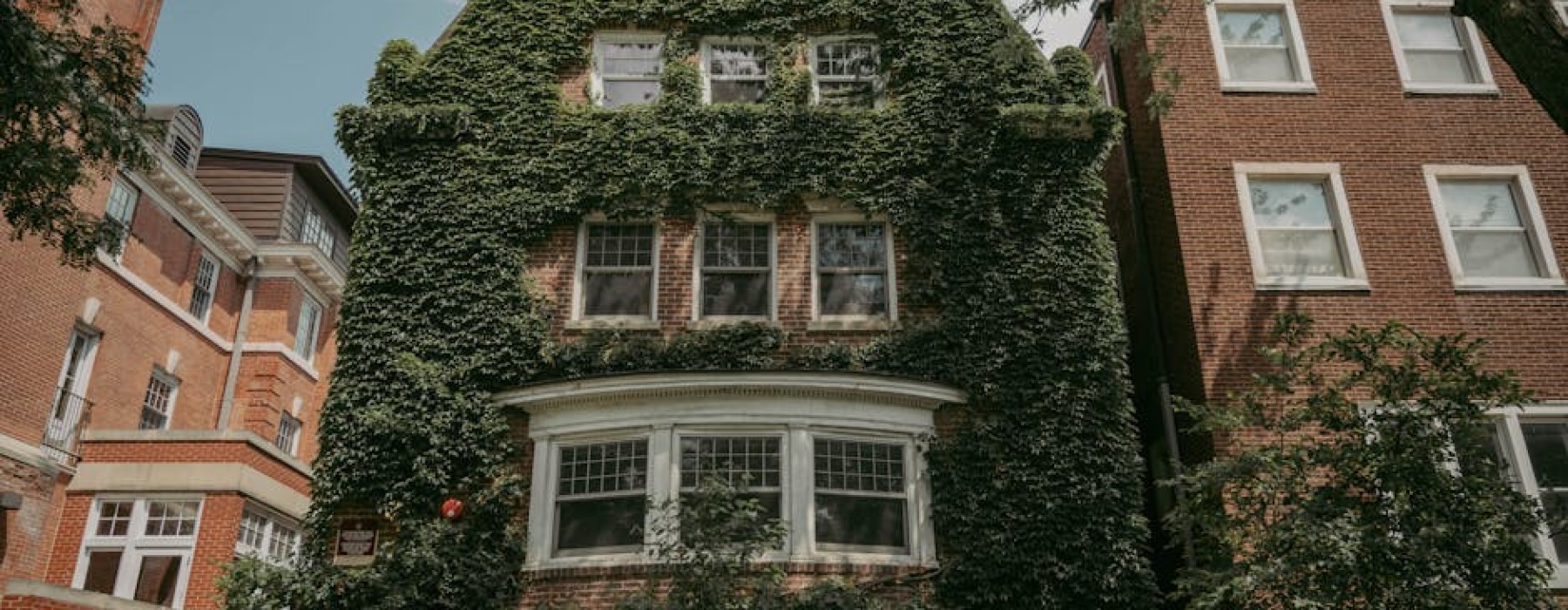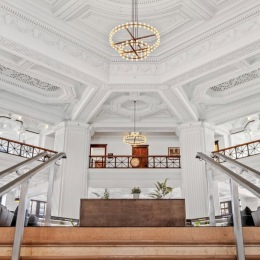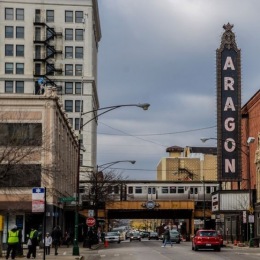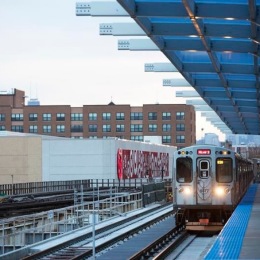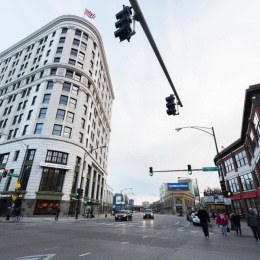Why Chicago's Historic Homes Represent America's Greatest Architectural Legacy
Historic homes chicago offer an unparalleled journey through America's architectural evolution, from pre-Civil War cottages to Prairie School masterpieces. Chicago's residential heritage survived the Great Fire of 1871 and flourished during the Gilded Age, creating one of the nation's most significant collections of historic houses.
Top Chicago Historic Homes to Visit:
- Glessner House - H.H. Richardson's Romanesque Revival masterpiece
- Frederick C. Robie House - Frank Lloyd Wright's Prairie School icon
- Clarke-Ford House - Chicago's oldest home from 1836
- Jane Addams Hull-House - Nobel Peace Prize winner's settlement house
- Richard H. Driehaus Museum - Gilded Age mansion with original furnishings
Key Historic Neighborhoods:
- Prairie Avenue District - Former "Millionaire's Row" with surviving mansions
- Gold Coast/Astor Street - Limestone palaces and architectural revival styles
- Old Town Triangle - Pre-Fire architecture and historic landmarks
- Pullman National Monument - Complete Victorian company town
Chicago's historic homes tell the story of architectural innovation, from Louis Sullivan's early residential work to Frank Lloyd Wright's Prairie style. These preserved residences showcase how wealthy industrialists, immigrant communities, and visionary architects shaped the city's residential landscape between the 1870s and 1920s.
The Great Chicago Fire of 1871 actually accelerated historic home development, as rebuilding efforts attracted the nation's top architects. Prairie Avenue once hosted nearly 90 mansions and was promoted during the 1893 World's Columbian Exposition as a must-see destination for architectural tourism.
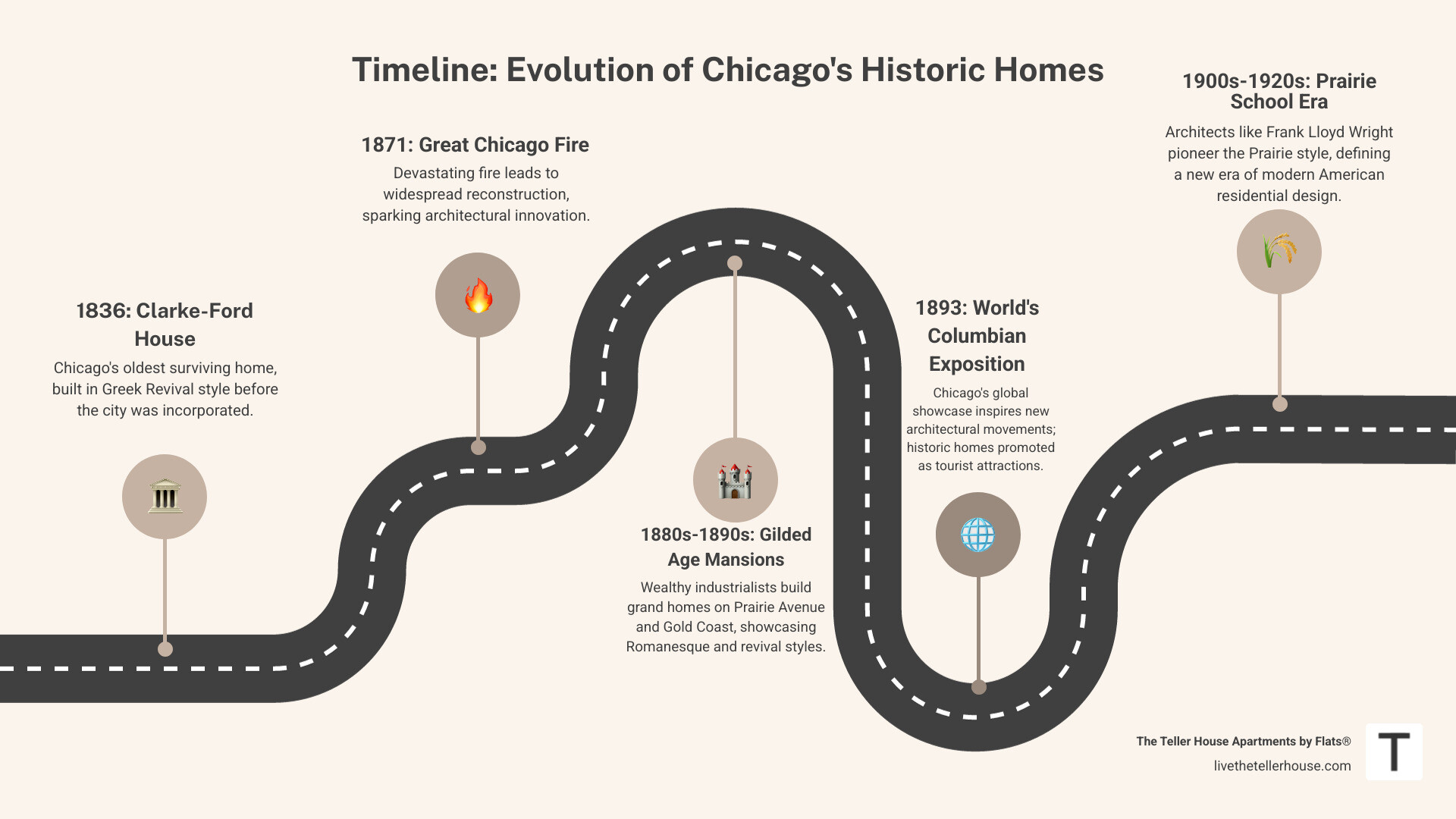
Chicago's Historic Home Neighborhoods and Districts
Chicago's historic homes chicago are concentrated in several distinct neighborhoods, each representing different eras of the city's development. These areas contain over 350 National Register listings, including 83 historic districts that preserve entire streetscapes of architectural significance.
The most significant historic home districts emerged after the Great Fire of 1871, when wealthy residents rebuilt with grander designs. Prairie Avenue became known as "Millionaire's Row," while the Gold Coast attracted industrialists seeking limestone mansions.
More info about Historic Apartments Chicago
Prairie Avenue - Chicago's Former Millionaire's Row
Prairie Avenue District stands as Chicago's most famous historic residential area, once home to nearly 90 mansions during the late 1800s. This stretch housed the city's elite, including Marshall Field, George Pullman, and other industrial magnates.
The Glessner House, completed in 1887, remains the district's crown jewel. Designed by H.H. Richardson, this fortress-like mansion shocked neighbors with its radical departure from Victorian norms. The family occupied the house from 1887 to 1936, and their extensive archives helped restore the interior to its original 1890s appearance.
Gold Coast and Astor Street Historic District
The Gold Coast emerged as Chicago's premier residential district in the early 1900s, featuring limestone mansions designed in various architectural revival styles. Astor Street became the heart of this exclusive neighborhood, lined with palatial homes.
The Nickerson House, now the Richard H. Driehaus Museum, earned the nickname "Marble Palace" for its opulent interiors. These mansions featured Doric and Ionic pilasters, stained-glass fanlights, and Gothic arches that defined the neighborhood's architectural vocabulary.
Pullman National Monument
The Pullman district represents a unique chapter in Chicago's residential history as a complete company town designed by George Pullman for his railroad car workers. Built in the 1880s, this planned community included more than 1,000 homes and public buildings designed in Queen Anne and other Victorian styles.
Today, Pullman National Monument preserves this industrial heritage, showing how company towns shaped American residential development.
Architectural Styles That Define Historic Homes Chicago
Chicago's historic homes chicago showcase an extraordinary range of architectural styles, from Greek Revival cottages to Prairie School innovations. The city's residential architecture reflects broader American design movements while developing unique characteristics influenced by local conditions and innovative architects.
Frank Lloyd Wright's Prairie Style Legacy
Frank Lloyd Wright revolutionized American residential architecture through his Prairie School designs, which emphasized horizontal lines, natural materials, and integration with the landscape. Wright developed approximately one-quarter of his life's work from his Oak Park studio.
The Frederick C. Robie House, completed in 1910, represents Wright's Prairie style at its peak. The American Institute of Architects named it one of the 10 most significant structures of the 20th century, and it's recognized as a UNESCO World Heritage site.
Wright's Frank Lloyd Wright Home & Studio in Oak Park shows his architectural evolution. The Emil Bach House, designed in 1915, offers the unique opportunity to experience Wright's architecture through overnight stays.
Victorian and Gilded Age Grandeur
Chicago's Victorian and Gilded Age mansions demonstrate the era's love of ornate detailing, varied materials, and dramatic silhouettes. These homes featured turrets, bay windows, elaborate cornices, and rich interior woodwork that showcased both craftsmanship and wealth.
The Frances J. Dewes Mansion, built in 1896 for Prussian immigrant and brewer Francis Dewes, underwent a six-year restoration. The Gothic-revival masterpiece now blends original stained-glass windows, painted panels, and tiled-mosaic floors with modern amenities.
Must-Visit Historic House Museums
Chicago's historic house museums offer immersive experiences in preserved residential spaces, complete with period furnishings and guided tours. These museums demonstrate how different social classes lived during Chicago's development, from immigrant settlement houses to industrial magnates' mansions.
More info about Chicago Historic Building Apartments
Glessner House Museum
The Glessner House stands as Chicago's premier historic house museum, showcasing H.H. Richardson's residential design. Completed in 1887, this Romanesque Revival masterpiece influenced architects including Louis Sullivan, Mies van der Rohe, and Frank Lloyd Wright.
The museum preserves the home's original furnishings and family artifacts, including nearly 3,000 volumes in the family library. The house features eleven fireplaces, including one lit with embers carried from the family's previous home according to tradition.
Richard H. Driehaus Museum
The Richard H. Driehaus Museum occupies the former Nickerson House, built in the late 19th century for banker Samuel Nickerson. This "Marble Palace" showcases Gilded Age interiors with original decorative arts and period furnishings.
The museum's collection spans from Art Nouveau to Modernism, housed in rooms with elaborate plasterwork, stained glass, and carved details. Current exhibitions include "Chicago Collects: Jewelry in Perspective," featuring approximately 200 pieces from private Chicago collections.
Jane Addams Hull-House Museum
The Jane Addams Hull-House Museum preserves the settlement house where Nobel Peace Prize winner Jane Addams worked to improve conditions for Chicago's immigrant communities. The museum tells the story of Hull-House's innovative programs, including childcare, education, and advocacy for women's suffrage and social justice.
Famous Architects and Their Chicago Residential Masterpieces

Chicago's historic homes chicago showcase work by America's most influential residential architects, who developed new styles and construction techniques that shaped domestic architecture nationwide. The concentration of architectural talent in post-Fire Chicago created an unprecedented period of residential design experimentation.
The Chicago School Pioneers
The Chicago School architects, famous for developing the skyscraper, also created significant residential work. The Ann Halsted House, built in 1883-84, represents the oldest surviving residence designed by Adler & Sullivan, blending Queen Anne style with French influences.
Daniel Burnham's residential work demonstrated how Chicago School principles could create comfortable family homes, emphasizing rational planning and honest use of materials.
Prairie School Movement Leaders
Beyond Frank Lloyd Wright, the Prairie School movement included architects like George Maher, who developed their own interpretations of horizontal emphasis and natural integration. Maher's work in the Hutchinson Street Historic District demonstrates how Prairie School architects created visual unity through repeated motifs and materials.
Preservation Stories and Adaptive Reuse Success

Chicago's historic homes chicago demonstrate remarkable preservation success stories, from mansion-to-museum conversions to engineering feats that physically relocated entire buildings. The city's preservation movement gained momentum in the 1960s and 1970s as urban renewal threatened historic neighborhoods.
From Mansions to Museums
Many of Chicago's grandest historic homes survived through conversion to museums, cultural centers, and event spaces. The Madlener House now accommodates a non-profit organization's administrative offices, while the Wheeler-Kohn House operates as a private business, both maintaining their architectural integrity.
Moving History - The Harriet F. Rees House
The Harriet F. Rees House represents one of Chicago's most dramatic preservation success stories. In 2014, this 762-ton mansion was moved 600 feet on 232 hydraulically controlled wheels to make way for convention center expansion, demonstrating the lengths preservationists will go to save significant architecture.
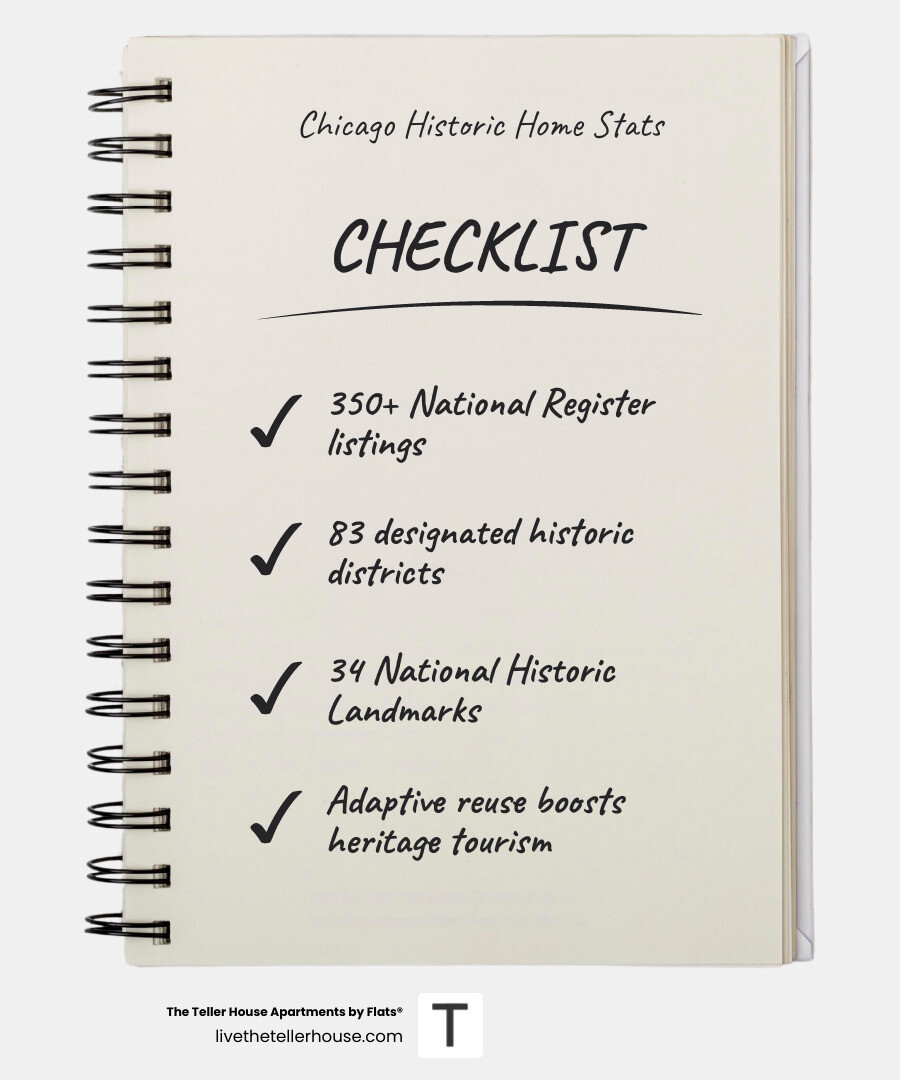
Frequently Asked Questions about Historic Homes Chicago
What is the oldest historic home in Chicago?
The Clarke-Ford House Museum, built in 1836, holds the distinction as Chicago's oldest surviving home. This Greek Revival cottage predates the city's incorporation and survived both the Great Fire of 1871 and subsequent urban development pressures.
Can you tour Frank Lloyd Wright homes in Chicago?
Yes, several Frank Lloyd Wright homes offer public tours in Chicago and Oak Park. The Frederick C. Robie House provides multilingual self-guided audio tours, while the Frank Lloyd Wright Home & Studio offers guided tours. The Emil Bach House provides overnight stays for an immersive architectural experience.
Which neighborhoods have the most historic homes?
Prairie Avenue District, Gold Coast, Oak Park, and Lincoln Park contain Chicago's highest concentrations of historic homes. Prairie Avenue once featured nearly 90 mansions, while the Gold Coast maintains numerous limestone palaces. Oak Park preserves the largest collection of Frank Lloyd Wright homes.
Conclusion
Chicago's historic homes chicago represent an unparalleled collection of American residential architecture, from the 1836 Clarke House to Frank Lloyd Wright's Prairie School innovations. These preserved homes tell the story of architectural evolution, social change, and urban development that shaped American domestic architecture nationwide.
The city's historic neighborhoods demonstrate how preservation efforts can maintain architectural heritage while adapting to contemporary needs. The concentration of architectural talent in post-Fire Chicago created residential designs that influenced American home building for generations.
At The Teller House Apartments by Flats, we understand the appeal of historic architecture combined with modern living. Our change of a historic bank building into luxury apartments demonstrates how Chicago's architectural heritage can serve contemporary residents while preserving the city's distinctive character.
Whether you're touring the Glessner House's Romanesque Revival interiors, experiencing Frank Lloyd Wright's Prairie School innovations, or exploring the Gold Coast's limestone mansions, Chicago's historic homes offer an architectural journey through America's residential heritage.
